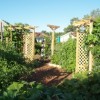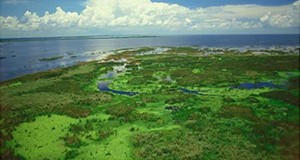During the summer, many of Florida's nutrient-enriched lakes and reservoirs experience proliferations of cyanobacteria commonly called “blooms.”. Cyanobacteria are natural in Florida lakes and reservoirs, but when they grow to high levels and bloom, they become a big problem. They look awful, smell bad, and can poison fish and other animals in the water. To help resource managers considering costly remediation projects or evaluating the effectiveness of nutrient reduction strategies to manage the problem, this 7-page fact sheet presents the results from 15 years of studies observing three large, nutrient-rich lakes in Florida (Lake Harris, Lake George, and Lake Okeechobee) to study the relationship between rainfall and cyanobacteria blooms and learn causes of year-to-year bloom variability. Written by Karl E. Havens, Mark V. Hoyer, and Edward J. Phlips and published by the Florida Sea Grant College Program
http://edis.ifas.ufl.edu/sg142
Tag: Putnam County
Design and Implementation of Edible Plant Demonstration Gardens: A Case Study of the Putnam County Extension Edible Garden (ENH1205/EP466)
 Demonstration gardens are a collection of plants assembled and organized in a manner that allows garden visitors to access and study them. Most gardens are designed with a particular focus and include plants that support the purpose and educational theme of the garden. This case study features an edible plant demonstration garden that was designed and installed in Hastings, Florida, on the Extension office grounds. The UF/IFAS program and the Partnership for Water, Agriculture, and Community Sustainability (FPWACS) designed and implemented the demonstration garden using a step-by-step process that is discussed in this 15-page fact sheet written by Gail Hansen, Joseph Sewards, Rebecca Almeida, and Andrew Dunn, and published by the UF Department of Environmental Horticulture, November 2012.
Demonstration gardens are a collection of plants assembled and organized in a manner that allows garden visitors to access and study them. Most gardens are designed with a particular focus and include plants that support the purpose and educational theme of the garden. This case study features an edible plant demonstration garden that was designed and installed in Hastings, Florida, on the Extension office grounds. The UF/IFAS program and the Partnership for Water, Agriculture, and Community Sustainability (FPWACS) designed and implemented the demonstration garden using a step-by-step process that is discussed in this 15-page fact sheet written by Gail Hansen, Joseph Sewards, Rebecca Almeida, and Andrew Dunn, and published by the UF Department of Environmental Horticulture, November 2012.
http://edis.ifas.ufl.edu/ep466
FE826 Balancing Agricultural Production and Environmental Protection in the Tri-County Agricultural Area: Results from Stakeholder Discussions
FE826, a 6-page illustrated fact sheet by Tatiana Borisova, Laila Racevskis, Bryan Fluech, and Jane Provancha, summarizes key points from discussions with various stakeholders in the Putnam, St. Johns, and Flagler tri-county agricultural area during a session of the Florida Natural Resources Leadership Institute held in May of 2008. The discussions focused on the issues of balancing agricultural production and environmental protection in the region. Includes references. Published by the UF Department of Food and Resource Economics, December 2009.
http://edis.ifas.ufl.edu/fe826
